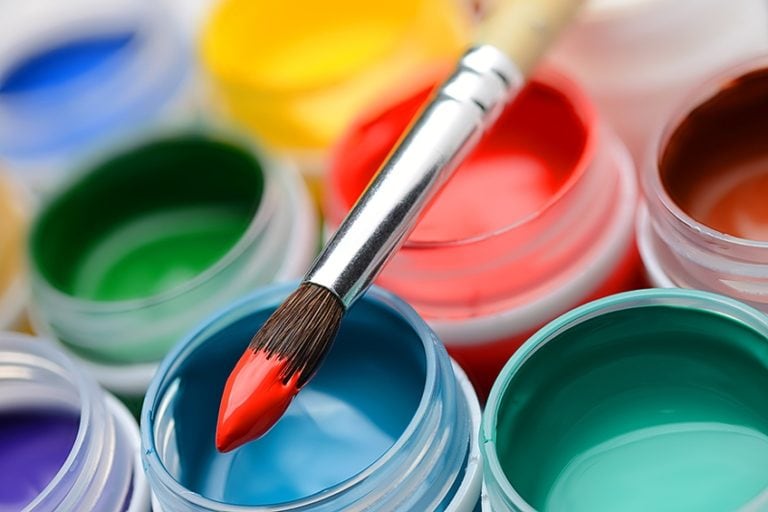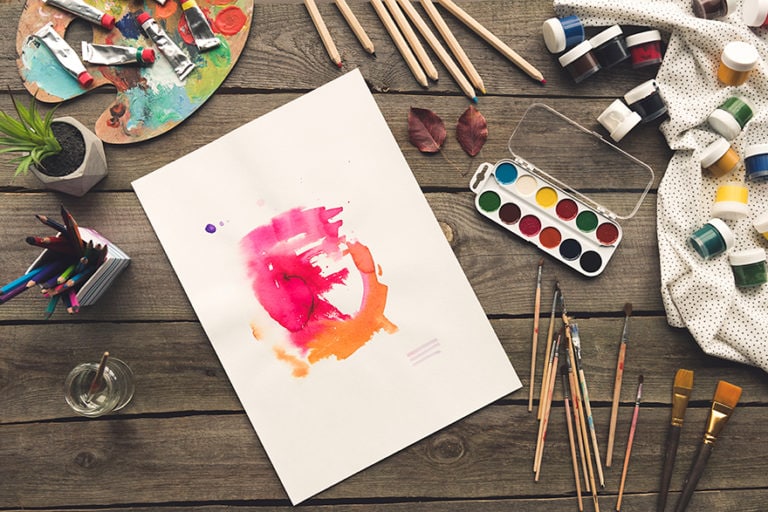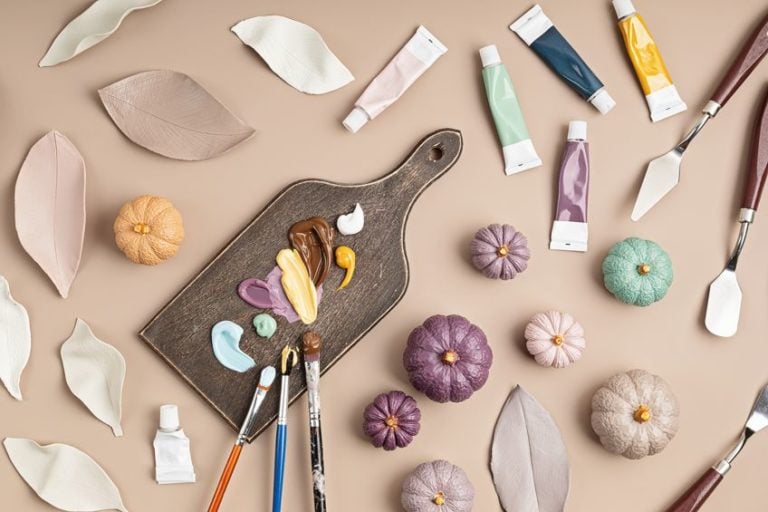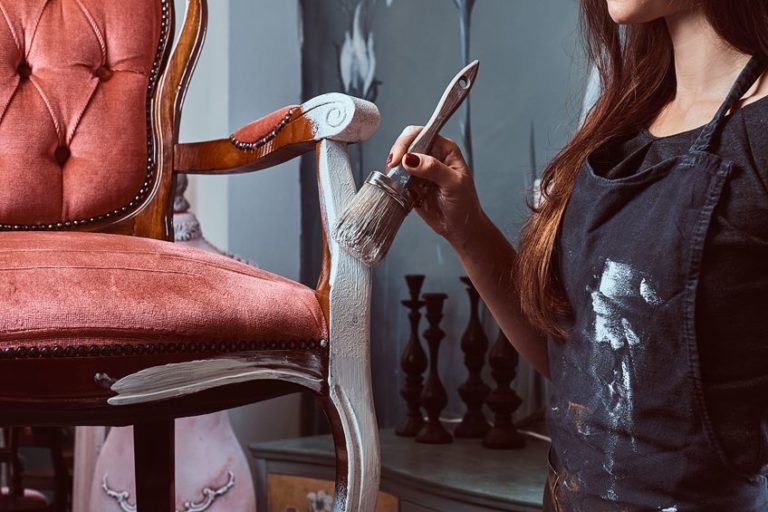What Is Gesso? – How to Use Gesso Primer to Prepare a Canvas
This post may contain affiliate links. We may earn a small commission from purchases made through them, at no additional cost to you.
If you are new to the art world, or to painting and acrylics, you are probably wondering – what is gesso what is so important about it? It is considered to be a vital part of the painting process; it is especially used as a primer for many surfaces.
Table of Contents
What Is Gesso Used For?
So, what is gesso and what is gesso used for? The word gesso is Italian for chalk and has also been used as the traditional preparation for gilding frames. Gesso is an art supply that you can purchase from your local art store. Gesso on canvas has been compared to white acrylic paint, as they are quite similar, except, gesso is thinner.
Many artists use gesso as a primer for their surfaces, this is because it dries hard, which makes the surface stiffer.
In simple terms, gesso is used to prepare the surface for painting. Most artists use gesso on canvas, it makes the canvas a bit textured, allowing it to accept the paint a lot easier. A canvas without gesso would make the paint practically soak into the weaves of it.
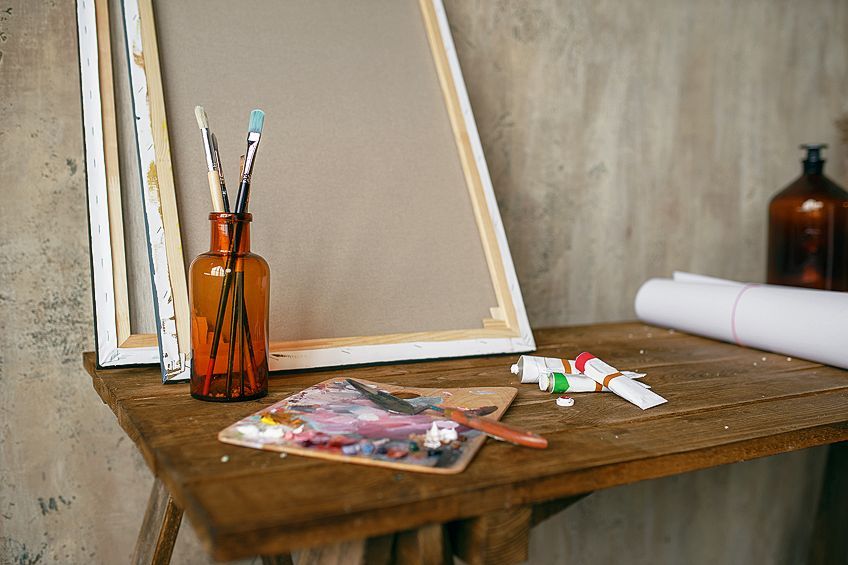
Gesso does not only have to be used on canvas; you can use it on other surfaces like wood for example. You could apply it to any surface you intend to use acrylic paint on. Remember, the purpose of gesso is to make it easier for the surface to accept the acrylic paint. Do not limit your surfaces to just canvas. Gesso provides a smooth surface over gilded frames and wooden moldings. Before the gesso is applied to the frame, it has to be primed with rabbit-skin glue to ensure that the gesso bonds with the surface. Normally, eight to ten layers of gesso are used to make sure the coating is strong and hard.
Although now, gesso spray is often used to prime the frames and other wooden surfaces, which not only makes it easier to use, but also gives it a more modern and slicker look.
Different Types of Gesso
Although gesso is usually white in color, you could also get clear gesso, black gesso, or colored gesso. You can, however, make the gesso any color you want, just mix a bit of your acrylic paint to the gesso to achieve the color you want. Gesso comes in two different grades, artist-grade, and student-grade. When determining the difference between the two, it comes down to the ratios of pigment vs. filler. Student-grade gesso contains more filler than artist gesso. This would mean that artist-grade gesso has more pigment, which also makes it thicker.
These differences are shown in the quality of the gesso, and of course, the price. Student grade gesso is normally only available in white, but this is not a train smash if you want to have it in a different color because remember, if you add a bit of acrylic paint to the gesso, you can get the color you desire. You could also get some clear gesso if you do not want it to have a color.
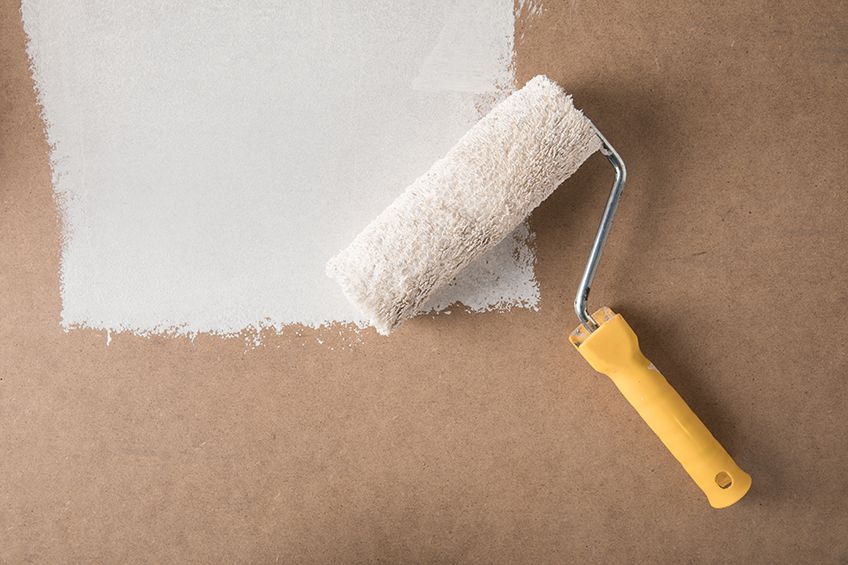
Naturally, your gesso will differ from brand to brand. The texture, and also consistency, would not be the same for every brand. You will find that some could be thicker, and others to be a bit more liquid. Some will be smooth, while others could be more textured when applied. Test a few different brands to find the one that works best for you. There is also a specific type of gesso, Liquitex Super Heavy Gesso, that can be used for sculptural effects on your canvas, using a palette knife or brush.
You are able to get gesso in the form of a squeeze bottle, which can be quite convenient, and even in a large jar or tube. Most artists would opt for the squeeze bottle as they can simply squeeze the gesso straight onto the canvas and then use a brush to smooth it out. If you want to mix your gesso with some acrylic paint, you may put some onto your palette first. For those of us who choose to use gesso from the jar, you can simply just put your brush into the jar and then apply the gesso to the canvas. There is an even easier way to use gesso as well, it also comes in a spray form.
What this means is that you will simply shake the can and spray it onto your canvas or any surface you are using. Of course, you would have no need for a paintbrush in this case.
Which Kind of Gesso Should You Use for Your Painting?
Now that we have established that there are different types of gesso, we would want to know which one is best for your painting. Remember, the canvas you have or are getting, may not be primed yet, or maybe you want to add another layer of gesso primer to your surface.
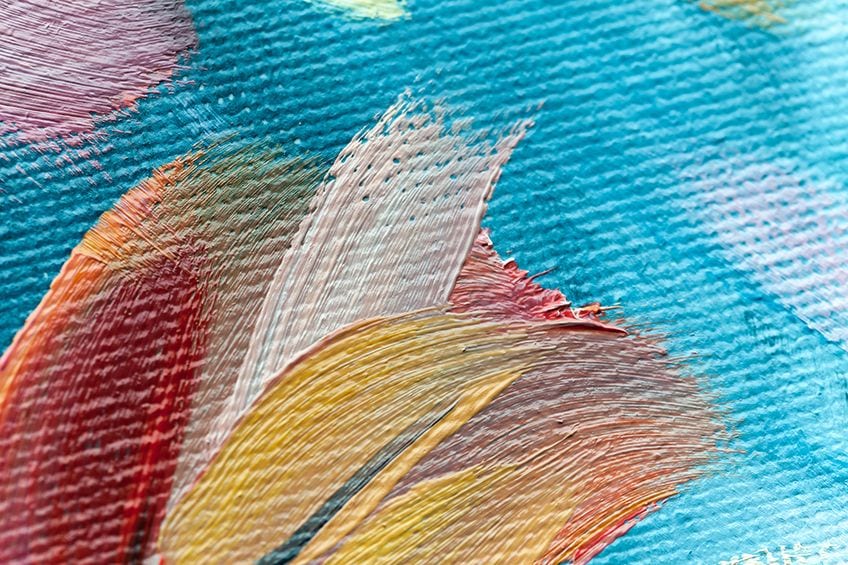
Acrylic Gesso
Some artists who use oil paints will use acrylic gesso. They find that it is easier to work with and also easy to clean up. Acrylic gesso will take about ten minutes to dry, once the canvas has dried, you can start painting.
Oil Painting Ground
You can get a good non-toxic oil painting ground from Gamblin. It has been suggested that you wait a period of two weeks for this primer to dry properly before you start painting over it. It is a good primer to use when working with oil paints as it provides a non-absorbent foundation.
Paints You Can Use on a Gesso Surface
Most artists will use acrylic paints on their gesso surfaces. Gesso primer and acrylic primer are often used on canvases before painting, they use gesso to improve the quality and not have the paint soak into the weaves of the canvas. If you are painting on other surfaces, like pieces of wood, it is also advisable for you to gesso the surface before going in with your acrylic paint.
If you do not prime your surface, the paint could easily soak into the surface, which may result in your painting not coming out the way you want.
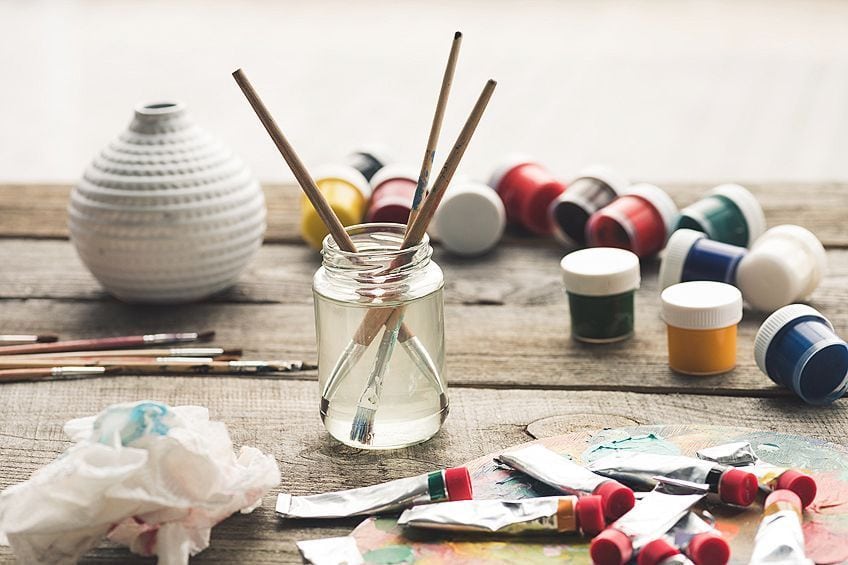
Although you can use oil-based paints on acrylic gesso, it is not recommended by some artists. Artists who have used oil paint on a gesso surface find that the paint does not necessarily secure the bond between the two. Oil paint might not give you the result you are hoping for on this particular primed surface. Your regular canvas, never mind your gesso surface, is really not absorbent enough to take on water-colored paints. When using watercolors on a canvas, it would lift off quite easily. This would make blending, or even applying multiple layers a bit difficult. If you are adamant about trying or using watercolors for your painting, there is a way to do it. You could use something called Golden Absorbent Ground.
So, although you could potentially use other mediums of paint on your gesso primer canvas, most artists would simply stick to using acrylic paint, as it is the easiest paint to take to the primed canvas or surface.
Gesso on a Gilt Frame
Gesso can be quite sensitive to climate change, which could possibly result in shrinking, flakes, and cracks if it is exposed to excessive heat, cold, dryness, and even humidity. There are ways to look after these frames of course. If you have these types of gilt frames or are planning to prime one, you will want to store it in an environment with little to no fluctuation in humidity or temperature. Try not to store these types of frames and artworks in places like a hot attic or damp basement. This is spoiling the wood and primer.

When you clean the glided frame, avoid using a damp or moist cloth. Unfortunately, it is not recommended to try and clean your frame at home as it could possibly cause more damage than anything else. If you are able to, it is best to have it cleaned professionally. If the frame is moved around too much, it could also damage the gesso layer that has been applied. If you are moving, or want to pack it away, it is best to seek professional assistance from your local fine art service providers. It is important to note that the gesso used by artists is not the same as the kind used on these gilded frames.
The gesso that artists use, or acrylic gesso, is meant for paintings. It contains less glue than the kind used to preserve these antique gilded frames.
How to Prime a Canvas
If you have ever wondered how to gesso a canvas, it is pretty easy, when applying gesso on canvas, you will want to use a wide, flat brush. Depending on the size of your canvas, you might need a bigger brush. You will take the paintbrush, dip it into the gesso, and then brush it into the canvas evenly. There is no correct way to know how to apply gesso on the canvas, it is all dependent on how you want your painting to come out. You may also want to dilute your gesso with a bit of water depending on the consistency and the brand you have. Thinning it with water will make the gesso on the canvas smoother.

Do You Need to Gesso if the Canvas Is Already Pre-Primed?
Although most canvases are pre-primed already, you may want to give it another coat or two of gesso primer as you may not be 100% satisfied with the absorbency of the canvas. This is absolutely fine; it will vary from artist to artist. Knowing where to buy gesso is as simple as popping into your local art store and finding one that suits you.
How will you know if the canvas does not have enough texture or absorbency? You will most likely have to test out the canvas first by applying some acrylic paint to it. If your paint soaks into the weave of the canvas, you will want to give it another coat of gesso primer.
This is, of course, up to you as the artist and how you want your painting to look. Depending on the style of painting you are aiming to achieve, you might not even want to apply more gesso to your canvas. Here are some steps you could follow on how to gesso a canvas;
- Get your gesso to the right consistency.
- Start out by applying a thin layer across your canvas, use a wide brush to cover the canvas completely.
- Clean your brush and then run it back and forth across the canvas to get rid of any air bubbles.
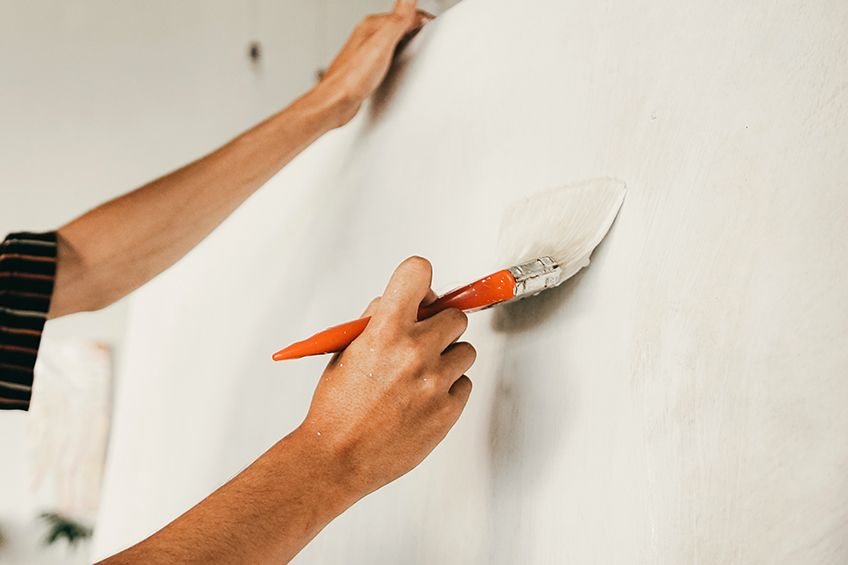
- Have the brush in a perpendicular position to the canvas, and use a crosshatch pattern to achieve optimal evenness.
- Allow the canvas to dry.
- Once it is dry, use sandpaper to lightly sand the canvas.
How to Make Your Own Gesso at Home
Of course, you can purchase gesso primer from your local art supply store, or you could get a pre-primed canvas, but you could also make your own gesso at home. There is more than one way to make a gesso primer from scratch, below are some of the recipes you can make use of to create acrylic gesso.
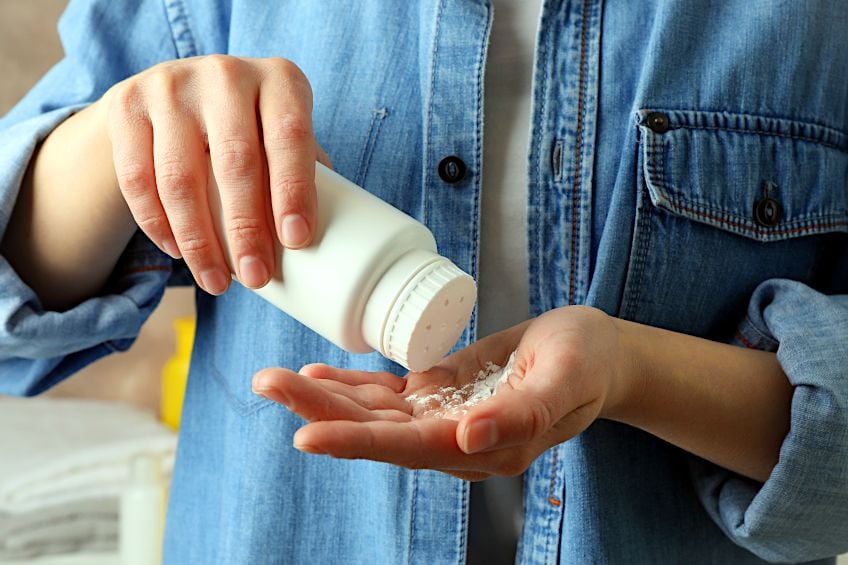
Gesso With Chalk: What You Will Need
- Nine ounces of water
- Four ½ ounces of glue
- 26 ounces of powdered chalk
- White acrylic paint or black acrylic paint
Instructions
- Add the glue and water, and mix together
- Once the mixture is complete, add the powdered chalk and mix until smooth
- Once your mixture is smooth, add the white or black acrylic paint
- Mix until you reach the desired consistency
Cornstarch and Baking Soda: What You Will Need
- Three parts cornstarch
- Three parts baking soda
- One-part glue
- One-part white acrylic paint or black acrylic paint
- Two to three parts water
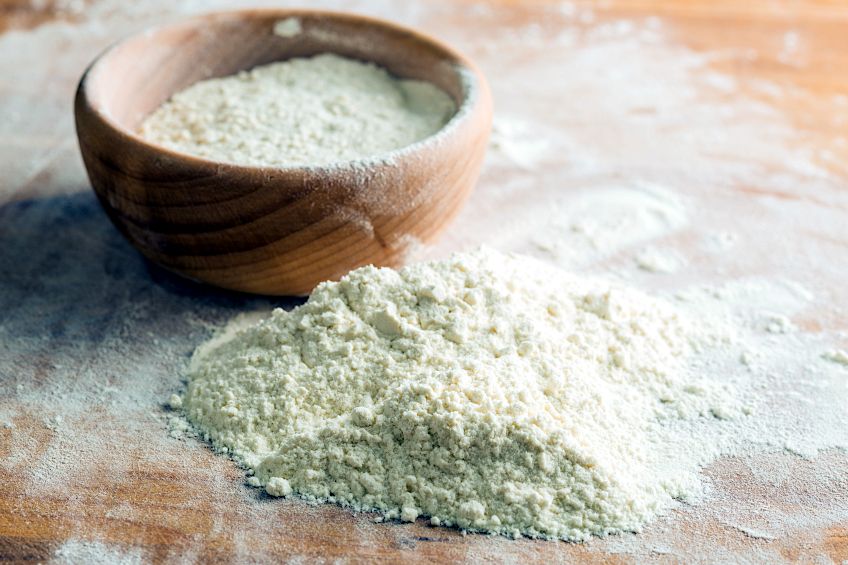
Instructions
- Mix the cornstarch and baking soda until the mixture is smooth
- Once the mixture is smooth, add the glue and acrylic paint, and mix them together
- Lastly, add little bits of water at a time until you have the correct consistency
Art Supply Store Gesso Recipe: What You Will Need
- Half a cup of school glue
- Three cups talcum powder
- White acrylic paint or black acrylic paint
- You may add water to get your desired consistency
Instructions
- Mix the school glue, talcum powder, and acrylic paint together
- Once the mixture is complete, you may add some water to reach a specific consistency
How to Make Gesso With PVA-Size Glue: What You Will Need
- Golden GAC 100 or Golden GAC 400 (PVA Size)
- Fine chalk dust
- 400-grain sandpaper
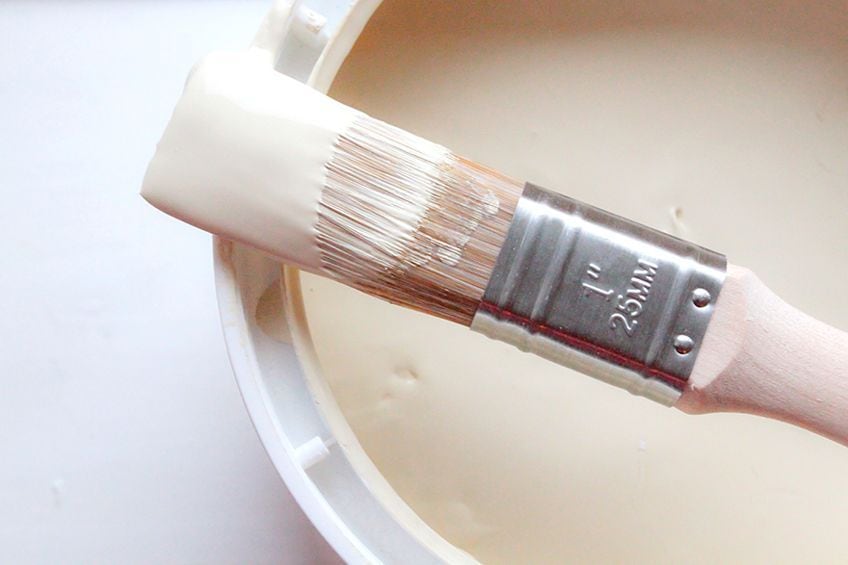
Instructions
- Add one layer of Golden GAC to your surface, and allow it to dry
- Once it has dried, mix one-part Golden GAC with one-part chalk dust
- Add the mixture to your surface and allow it to dry
- If you want a thicker or milkier texture, you can use two parts chalk for your Golden GAC. Alternatively, you could do more than one layer on your surface
- Once you are done with the layers, use the 400-grain sandpaper to sand the dry gesso until it is smooth
The purpose of gesso is to make things easier for the artist when painting. Now that we know how to apply gesso to a canvas, and other surfaces, we also no longer need to wonder – what is gesso used for. Using gesso as a primer will create a better surface for you to work on when painting. The best part about all of this is that we can easily make gesso at home if we want to try it out for the first time.
Frequently Asked Questions
Where Can You Buy Gesso?
If you want to know where to buy gesso, the simple answer would be, at your local art supply store. If you do not have the time to go to the store to get supplies, you could also buy them online and have them delivered.
How Thin Should Gesso Be?
Acrylic gesso and regular gesso come in different consistencies, some of them will have the perfect consistency straight out of the container. Artists prefer their gesso to be just thin enough for them to pour onto the surface, while a thicker gesso could leave brushstrokes in them. However, you may also thin your gesso with a bit of water until you get the right consistency.
How Do You Thin Gesso?
You may use water to thin your gesso. Many artists prefer acrylic gesso and just acrylics in general for this reason. When you thin your gesso, be careful not to add too much water at a time. You want to add little bits as you go along.
What Other Surfaces Can You Use Gesso On?
You could use gesso on prime wood panels or Masonite panels. It is suggested that you gesso these surfaces before using paint on them as the paint can soak into the wood or even slide off the Masonite. Keeping in mind, gesso is a form of primer. The purpose of primer is to make it easier for the surface to accept the paint, you should consider priming most surfaces before painting on them.
Larissa Meyer is a 32-year-old mother from Michigan and creative spirit since childhood. Her passion for painting and drawing has led her to an education as an illustrator and a career as a freelance graphic designer. She has a Bachelor of Fine Arts in Illustration and a degree in Graphic Design. Larissa is a talented artist who is able to master a wide range of styles and techniques to bring her artistic vision to life. Her greatest passion is currently fluid painting and epoxy resin art. Larissa’s love for art and her knowledge and experience in illustration make her the perfect Creative Director for our fluid-painting.com team. She is the creative head of our team and shares her passion and knowledge with our community through articles and tutorials.
As a mother of a 2-year-old daughter, Larissa also understands the importance of fostering creativity in early childhood. She uses her experience and knowledge to help other parents inspire their children and develop their artistic skills as well.
Learn more about Larissa Meyer and about us.



